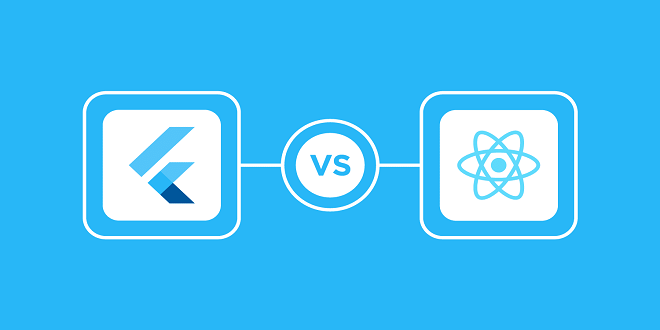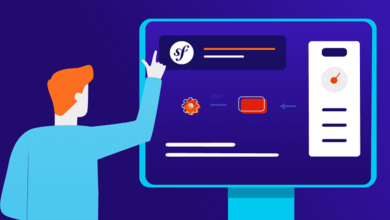Flutter or React Native? Which one is better for your mobile app project?

Both Flutter and React Native are used to develop mobile apps. These tools are used to develop interactive iOS and Android apps. They both have the same goal, so it is important to understand their differences and pick the one that suits you best. You might find this post helpful: Flutter vs. React Native
Continue reading to find all the information needed by companies to make a decision between Flutter or React Native. Let’s begin.
Flutter: The Basics
Google’s framework can be used on any mobile device. It is compatible with all internet apps and can be integrated with existing ones. It is now considered one of the most popular open-source frameworks due to Google’s involvement.
It has a complete development environment, the ability to quickly reload, and is free-of-cost. However, it still has some shortcomings such as its dependence on regional technology and tools.
It is a popular choice for companies that have strict framework requirements. It is quickly becoming a popular choice for React because of its speed and other benefits. It is a smart idea to do some research on Flutter app development costs before you hire Flutter developers India.
React Native – The Basics
Facebook created one of the most popular and widely-used cross-platform app development platforms today in 2015. It is so popular because of its versatility. Its versatility allows developers to create mobile apps with React and JavaScript, as well as other native platform features. This is what makes it so popular.
This open-source framework is very reliable. It includes features such as hot reloading and platform-specific code. There’s also one of the largest UI support groups anywhere in the world. Its many plug-and-play components make it easy for developers to use. Hire React Native developers India to learn more.
However, this system has its drawbacks. The UI is complex and navigation is not always easy.
Flutter and React Native: What’s the Difference?
Which one should you choose? Flutter or React Native. Let’s start by being clear. Both have their advantages and disadvantages, depending on the details of each project. I recommend both.
The key is to understand the traits and not what others call the trends. Let’s get on with it.
- Language:
React Native React Native is fully integrated JavaScript and makes use of React. React Native is a good choice because JavaScript is the most used language right now.
Flutter Dart is the programming language that creates Flutter. Dart is a programming language that Google released for the first time in 2011. It’s rarely used by developers.
- User Interface
React Native React Native works with native components for both Android and iOS. You can create stunning interface designs for your apps with a variety of external UI kit options.
Flutter Flutter’s aesthetic, structural, platform and interaction widgets are proprietary. These widgets can be integrated UI elements and play the role of native platform components.
- Performance:
Native React – Native React uses JavaScript to connect to native components. Flutter’s development and operation times are slower than Flutter’s.
Flutter To initiate communication with the device’s native component, there is no connecting link. Native component interactions are faster, which improves the overall speed of the application.
- Documentation:
React Native The general documentation for React Native is available. The framework heavily depends on external development kits. Flutters is not as easy to understand the documentation as Flutters.
Flutter Because of its structure and detailed information, it provides documentation that is easy to understand. The documentation is also simpler and more organized.
- Popularity:
Native – Native is more widely used and popular than Flutter as an application development framework. React developers can quickly create react native mobile applications. This is why more developers are choosing this framework.
Flutter Although Flutter has attracted some attention recently, it is still far behind Flutter in terms of the number and quality of its developers. Dart is a brand new language. Therefore, the adoption rate among developers is slightly lower.
- Community Support
React Native React Native is the most used framework according to Stack Overflow. It has over 310,507 questions categorized with it. It was made open-source in 2015 by GitHub.
Flutter There is a small community for Flutter’s newer framework. It is being adopted by more and more developers. There are more than 89,638 questions about it on Stack Overflow.
- Industry Trends
React Native – According to a 2019 Stack Overflow survey, 62.5% said that they are fans of React Native. It is used and has been around for some time, so it offers more job opportunities.
Flutter:Flutter took first place with 65.4%. Flutter is still relatively new and less businesses use it. This results in fewer employment opportunities. However, it is possible that this will change in the next few years.
React Native and Flutter: The Future of Flutter
If I look at Flutter and React Native in relation to their futures, we will be able to see the latest trends in these frameworks. Flutter has overtaken React Native as the most popular cross-platform mobile app framework for developers in the last four years, between 2019 and 2022.
Google has been providing steady updates to Flutter’s platform and encouraging a supportive community. Since Flutter 3 was released, Flutter has seen over 500,000 apps.
These are some of the most significant enhancements to Flutter 3:
Web version allows for faster image decoding
Universal binaries for macOS
Support for desktop platforms
Variable refresh rate iOS
International text inputs supported
Support for folding phones
React Native 0.69 recently made these improvements:
API: The most recent status bar
Compatibility with C++17
File containing a new.xcode.env configuration
M1 users have enhanced compatibility
Hotkeys for iOS debug menu
The Meta community has been tirelessly working to make important changes and enhancements to React Native. It is unlikely that React Native will ever be able to catch Flutter in the competition.
Wrapping up!
Summarizing, choosing the wrong mobile development technology can lead to benefits being overlooked. If you aren’t sure which option to choose between Flutter or React Native, then it is likely that there is a better solution.
This is why I strongly recommend that you hire an mobile app developer company to help you build your application. They will also assist you in choosing the right one for you.
Frequently Asked Question
How simple is it to maintain your application codes with Flutter and React Native.
It’s much easier to manage Flutter applications than a Java application. Developers can find problems and locate outside tools easily thanks to the code’s clarity. Instant problem resolution is also possible with the stateful Hot Reloading capability. React Native’s hot-reloading capability is superior in terms of the time it takes to provide high-quality updates, and make quick changes to an application.
React Native can be challenging to upgrade and troubleshoot the code. Modifying the code to suit your application can slow down the creation process. A third-party dependency may also exist for most of the native components. These libraries are often lacking modern technology and cannot be properly maintained due to the inherent problems.
What’s the difference in the size of an application with Flutter and React Native sizes?
This simple hello world app was created in Flutter and has a file size of 7.5MB. Flutter’s app size can be affected by the Dart Virtual Machine as well as the C/C++++ engine. Flutter can self-contain all assets and programs to avoid size issues. A unique tag, such as -split_debug-info, can reduce the code’s size.
React Native’s Hello World app started at 7MB. After native dependencies were added, it grew to 13.4MB. React Native is faster than Flutter and can create projects with smaller files.
Additionally, by automatically producing split versions for all native and external libraries, utilizing the enableSeparateBuildPerCPUArchitecture element and Proguard will significantly minimize the size.
The rise of the Female Delusion Calculator has been a phenomenon in recent years. This online tool has gained immense popularity due to its origins and unique functionality. Originating from the growing awareness around the gender pay gap and other gender-related disparities, the Female Delusion Calculator aims to shed light on the delusions that women may have about their own achievements and capabilities.
How big is the Flutter/React Native community?
Flutter has seen a greater growth than React Native since its 2017 debut. There are 662+ professionals contributing to Flutter, which is far less than React Native. There are 13.7k active projects being crafted by the community, which anyone can ask for assistance in development. There are many popular channels to communicate with the Flutter community around the world.
Slack
Discord
Gitter
Flutterday
Stack Overflow
React Native was also introduced in 2015. Since then, the community has grown. This is evident in the number of contributors to the framework on GitHub. This forum is home to more than 2,207+ professionals who are willing to share their knowledge.
Even a novice can seek help to create React Native apps. Developers collaborate on over 19.8k projects to solve current problems. There are many popular websites where you can find more React Native developers and projects.
Get together
Slack
Discord
Telegram
Stack Overflow



